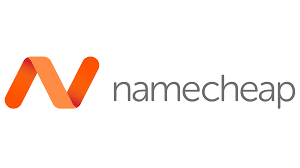Table of Contents
Introduction
In today’s hyper-connected world, digital products are redefining the way people create, consume, and profit from content and services. The Ultimate Guide to Creating and Selling Digital Products From e-books and online courses to software and digital templates, digital products offer a powerful way to generate revenue, build authority, and establish a scalable business model with minimal overhead costs.
As we step deeper into 2025, the digital product landscape has never been more exciting or accessible. With technological advancements, user-friendly platforms, and rising global demand, entrepreneurs, creatives, and even hobbyists are finding success in this space.
In this comprehensive guide, you will learn everything about creating, marketing, and selling digital products in 2025—from ideation to automation and beyond. Whether you’re a beginner or an experienced entrepreneur seeking to scale, this guide provides the insights, tools, and strategies you need.
What Are Digital Products?
Digital products are intangible assets or media that can be sold and distributed repeatedly online without the need to replenish inventory. Unlike physical products, they exist in digital form and can be downloaded or accessed virtually.
Common examples include:
1. E-books and Audiobooks
2. Online Courses and Webinars
3. Software and Mobile Apps
4. Digital Art and Graphics
5. Website Themes and Templates
6. Stock Photos, Videos, and Music
7. Membership Sites and Subscription Content
8. Printable Planners, Journals, and Worksheets
The beauty of digital products lies in their scalability. Once created, you can sell them to an unlimited number of customers without additional production costs.
Why Digital Products Are Booming in 2025
Several key factors are driving the explosive growth of digital products in 2025:
I. Accelerated Digital Adoption
Post-pandemic, the world shifted to online platforms faster than ever before. Remote learning, virtual events, and e-commerce became the new norm, making digital products highly sought-after.
II. Low Entry Barrier
Creating digital products no longer requires advanced technical skills. Today, user-friendly tools enable almost anyone to create high-quality digital products with ease.
III. Global Access
Digital products can reach customers anywhere in the world, breaking geographical boundaries and opening doors to a vast international audience.
IV. Automation Opportunities
From automated sales funnels to email marketing sequences, automation tools allow creators to build hands-free businesses that work around the clock.
V. Passive Income Potential
Many digital products offer ongoing revenue opportunities with minimal ongoing work, providing a steady passive income stream. giant, highly customizable for businesses of all sizes, especially larger enterprises with complex needs.
Types of Digital Products You Can Create
Choosing the right type of digital product depends on your expertise, target audience, and long-term goals. Here are the most popular categories in 2025:
I. E-Books and Audiobooks
E-books remain a powerful medium for sharing knowledge, stories, or guides. Audiobooks, on the other hand, cater to the growing demand for audio content.
II. Online Courses and Tutorials
Platforms like Teachable and Kajabi make it simple to create and sell courses on topics ranging from photography to coding.
III. Software and Mobile Applications
If you have technical skills, creating software, tools, or mobile apps can lead to significant profits, especially with subscription-based models.
IV. Digital Templates and Planners
Templates for websites, resumes, or social media posts are highly popular among creatives and small businesses.
V. Membership Communities
Subscription-based memberships offering exclusive content, live Q&A sessions, or coaching programs are increasingly common.
VI. Graphic Design Assets
From icons and logos to stock photos and illustrations, design assets continue to be in high demand.
How to Choose the Right Digital Product to Sell
Selecting the right digital product requires a thoughtful approach. Here’s a step-by-step method to help you decide:
Step 1: Identify Your Expertise and Passion
Ask yourself:
What topics do I feel passionate about?
What skills or knowledge can I confidently share?
Step 2: Analyze Market Demand
Research search trends using tools like Google Trends, Ubersuggest, or Ahrefs. Look for growing interest in your niche.
Step 3: Validate Product Ideas
Consider the following methods to validate:
1. Survey your audience or social media followers.
2. Check online marketplaces to see what sells well.
3. Launch a pre-sale campaign and gauge interest.
Step 4: Assess Competition
Evaluate your competitors to see?
What’s working for them?
How can you differentiate your product?
Step 5: Choose a Format
Select the format that best fits your audience’s needs:
Visual learners prefer videos and courses.
Readers enjoy e-books and guides.
Busy professionals may opt for audiobooks or templates.
Steps to Create a High-Quality Digital Product
I. Research and Planning
Thorough research ensures your product solves a real problem. Start by:
1. Defining your target audience’s pain points.
2. Mapping out a detailed solution through your product.
3. Setting clear learning or usage objectives.
II. Content Creation
Depending on your product type:
Write engaging, well-structured content for e-books.
Record high-resolution videos with clear audio for courses.
Code user-friendly apps with smooth functionality.
III. Design and Presentation
Appearance plays a huge role in perceived value. Consider:
1. Hiring a graphic designer for polished visuals.
2. Using tools like Canva for DIY design work.
3. Ensuring your design aligns with your branding.
IV. Testing and Refinement
Before launch, test your product by:
Offering it to beta testers.
Gathering feedback and making improvements.
Fixing bugs or enhancing the user experience.
V. Legal and Technical Setup
Secure your product by:
1. Adding appropriate copyright notices.
2. Setting up secure payment gateways.
3. Including clear terms of use and refund policies.
Essential Tools and Platforms for Digital Product Creation
I. Design Tools
Canva
Adobe Creative Cloud
Figma
II. Course Creation Platforms
Teachable
Thinkific
Kajabi
III. E-book and Document Tools
Scrivener
Google Docs
Reedsy
IV. Marketing and Automation Tools
ConvertKit
ActiveCampaign
Zapier
V. Payment Processors
PayPal
Stripe
Gumroad
VI. Marketplaces
Etsy (for digital planners and templates)
Udemy (for courses)
Amazon Kindle Direct Publishing (for e-books)
Pricing Strategies That Work
Pricing digital products is both an art and a science. Here are effective approaches:
I. Cost-Plus Pricing
Calculate the time, resources, and tools used in creating your product, then add your desired profit margin.
II. Value-Based Pricing
Price according to the value your product provides to the customer. If it saves them time, earns them money, or solves a pressing problem, you can charge more.
III. Tiered Pricing
Offer multiple versions of your product:
1. Basic version at a low price.
2. Standard version with added features.
3. Premium version with bonuses or extended access.
IV. Subscription Pricing
For membership sites or software, monthly or annual subscription models work well for recurring income.
V. Limited-Time Discounts
Introduce time-sensitive offers to create urgency and drive quick sales.
Marketing Your Digital Products Effectively
Without effective marketing, even the best digital product can remain unnoticed. Here’s how to promote successfully:
I. Build an Email List
An email list is your most valuable asset. Use lead magnets such as:
1. Free checklists.
2. Mini-courses.
3. Discounts or coupons.
II. Leverage Social Media
Promote across major platforms like Instagram, Twitter, LinkedIn, TikTok, and Pinterest.
III. Content Marketing
Publish blog posts, podcasts, or videos to educate your audience and drive organic traffic.
IV. Paid Advertising
Invest in:
1. Facebook and Instagram ads.
2. Google Ads.
3. YouTube pre-roll ads.
V. Collaborations and Affiliates
Partner with influencers or affiliate marketers who can promote your product for a commission.
Platforms and Marketplaces for Selling Digital Products
Here are top-performing marketplaces and platforms in 2025:
I. Gumroad
Ideal for indie creators selling e-books, courses, or memberships.
II. Etsy
Best for digital art, planners, templates, and design resources.
III. Udemy
Great for those selling video-based courses to a broad audience.
IV. Amazon Kindle Direct Publishing
Perfect for authors looking to sell e-books globally.
V. Podia
Excellent for selling courses, memberships, and digital downloads.
VI. Shopify with Digital Download Plugins
Suitable for creators who prefer complete control over their store.
Passive Income Potential and Scaling Up
Once your product starts gaining traction, you can grow your business in several ways:
I. Evergreen Sales Funnels
Automate your sales process using email sequences, upsells, and cross-sells.
II. Bundle Offers
Combine several products into one package for a higher-value sale.
III. Licensing and White-Labeling
Offer others the right to sell your product under their brand, earning licensing fees.
IV. Affiliate Programs
Recruit affiliates to promote your products in exchange for a commission.
V. Recurring Revenue Models
Introduce memberships or subscriptions for consistent income.
Common Mistakes to Avoid
Avoid these pitfalls to ensure a smoother journey:
I. Skipping Market Research
Creating a product without validating market demand often leads to failure.
II. Undervaluing Your Product
Pricing too low can harm your credibility and reduce profits.
III. Ignoring Customer Feedback
Listening to your customers helps refine and improve your offerings.
IV. Neglecting Marketing
Even the best product won’t sell without promotion.
V. Overcomplicating Your Product
Focus on simplicity and clarity, especially for first-time buyers.
Future Trends in Digital Products
Here’s what lies ahead for digital product creators:
I. Artificial Intelligence (AI) Integration
AI tools will assist in content creation, personalization, and customer service.
II. Micro-Learning Products
Short, focused digital products such as mini-courses or quick guides are gaining popularity.
III. Augmented Reality (AR) and Virtual Reality (VR)
Digital experiences incorporating AR and VR will become more mainstream.
IV. NFTs and Blockchain-Based Products
Digital ownership through blockchain and NFTs will create new monetization models.
V. Ethical and Sustainable Products
Consumers are becoming more mindful about privacy, ethics, and sustainability.
Conclusion
Creating and selling digital products in 2025 presents limitless opportunities for individuals and businesses alike. Whether your goal is to build a side hustle, scale a business, or earn passive income, digital products offer a powerful, flexible, and scalable solution.
By following the strategies outlined in this guide—conducting thorough research, focusing on quality, leveraging automation, and continuously improving—you can create digital products that resonate deeply with your audience and generate long-lasting success.
Now is the time to take action. Start brainstorming your digital product ideas today, choose your platform, and make your mark in the booming world of digital entrepreneurship.




